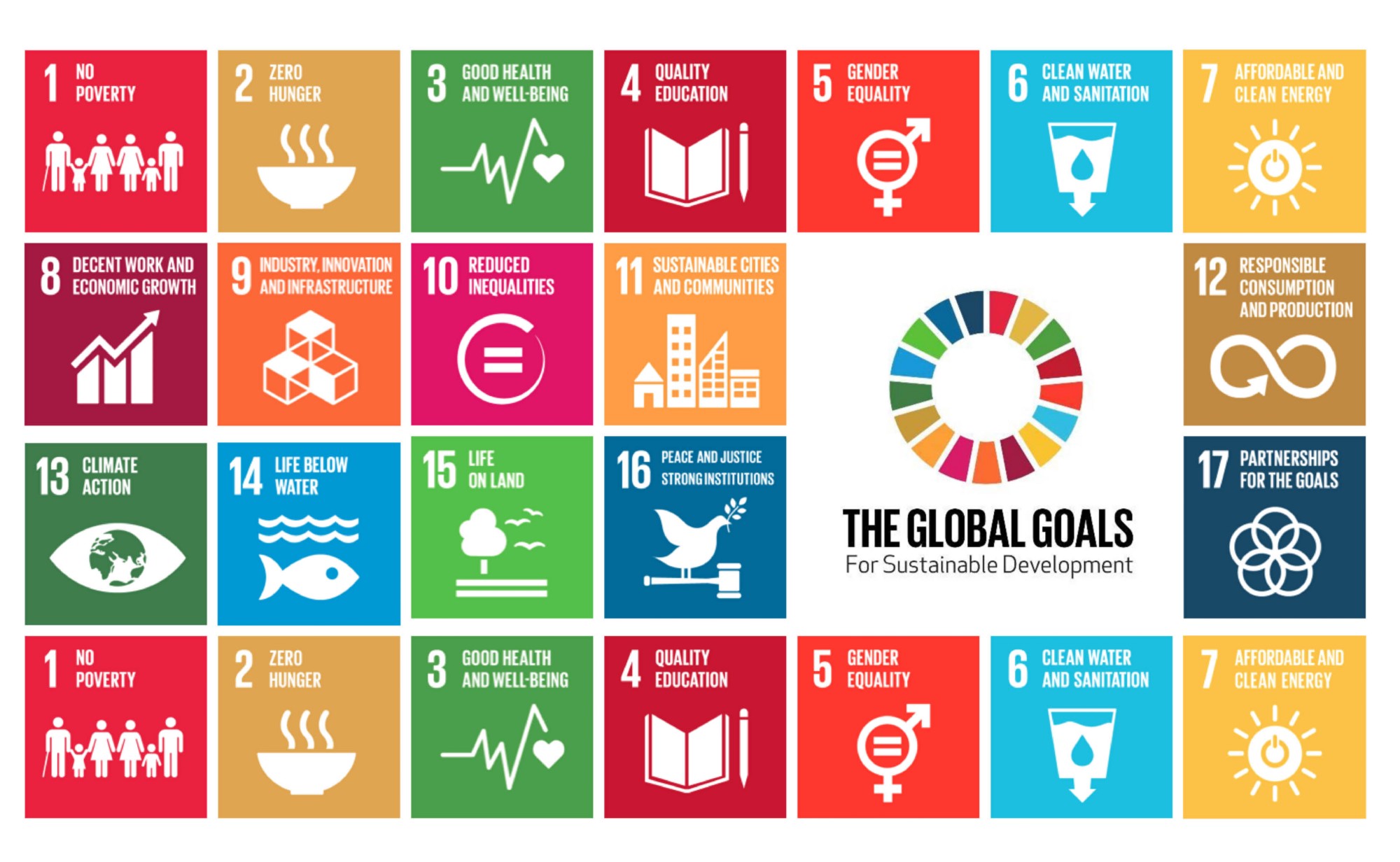Climate change is generally caused by global warming driven by human emissions of greenhouse gases and the ensuing large-scale shifts in weather patterns. Importantly, there have been previous periods of climatic change, since the mid-20th century humans have had an unknown impact on the Earth’s climate system which has caused changes on a worldwide scale and the largest driver of this warming is the emission of greenhouse gases – with carbondioxide (CO2) and methane making up over 90% of them. The main supply of these emissions are fossil fuel burning (coal, oil, and natural gas) for energy consumption, with extra contributions from agriculture, deforestation, and producing.
The human reason for global climate change is not disputed by any scientific body of national or international standing. Some of the climate feedbacks that cause accelerated or tempered rise in temperature rise are loss of sunlight-reflecting snow and ice caps, increased water vapour (a greenhouse emission itself), and changes to land and ocean carbon sinking.
In 1969, the Apollo rocket firing provided extraordinary images of our planet – Earth, suspended in space and this changed how we thought of the biosphere and its limits. Likewise, our increasing understanding of global climate change is changing how we tend to see the boundaries and determinants of human health. Initially, our personal health appear to be related principally to prudent behaviour, heredity, occupation, native environmental exposures, and health-care access, but sustained population health also needs the life-supporting “services” of the climate part. Populations of all animal species – including humans – rely on provision of food and water, freedom from excess communicable disease, and the physical safety and luxury presented by climatic stability. Therefore, the world’s climate system is vital to the present life-support.
However, humankind’s activities today, are changing the world’s climate. We are increasing the atmospheric concentration of energy-trapping gases, thereby amplifying the natural “greenhouse effect” that makes the Earth liveable. These greenhouse gases (GHGs) comprise, primarily, greenhouse gas (mostly from fuel combustion and forest burning), and different heat-trapping gases like gas (from irrigated agriculture, agriculture and oil extraction), nitrous oxide and various human-made halocarbons.
The effects of global climate change on humans, principally thanks to warming and shifts in precipitation, are detected worldwide. Regional impacts of global climate change are currently discernible on all continents and across ocean regions, with low-latitude, less developed areas facing the most risk. Continued emission of greenhouse gases can result in additional warming and long-lasting changes within the climate system, with probably “severe, pervasive and irreversible impacts” for each individuals and ecosystems. Global climate change risks are inconsistently distributed, however they are greater for deprived individuals in developing and
developed countries.
Climate change, alongside different natural and human-made health stressors, influences human health and illness in various ways. As some existing health threats can intensify and new health threats can emerge. However, not everyone seems to be equally in danger because vital contributory factors that also influence these outcomes are age,
economic resources, and location.
POTENTIAL PUBLIC HEALTH IMPACTS OF CLIMATE CHANGE
In Nigeria, public health may be influenced by disruptions of physical, biological, and ecological systems, as well as other disturbances originating from all around. The health effects of those disruptions include increased respiratory and cardiovascular diseases, injuries and premature deaths associated with extreme weather events, changes within the prevalence and geographical distribution of food- and water-borne diseases and different infectious diseases, and threats to psychological state.
Change in world climate would influence the functioning of the many ecosystems and their member species. Likewise, there would be impacts on human health. A number of these health impacts could be useful, for instance, milder winters would cut back the seasonal winter-time peak in deaths that happens in temperate countries. Whereas, in presently hot regions an additional increase in temperatures would possibly scale back the viability of disease-transmitting dipterous insect (Mosquito) populations. However, Overall, scientists contemplate that the majority of the health impacts of global climate change would be adverse.
Climatic changes over recent decades have most likely already affected some health outcomes. One of which the World Health Organization estimated, in its “World Health Report 2002”, that global climate change was estimated to be responsible for roughly 2.4% of worldwide diarrhoea, and 6% of malaria in middle-income countries.
However, tiny changes, against a loud background of ongoing changes in other causative factors, are hard to spot but once noticed, these causative attributions are strengthened for similar observations in several population settings.
The first detectable changes in human health may perhaps be alterations within the geographic range (latitude and altitude) and seasonality of some infectious diseases – as well as vector-borne infections like malaria and dengue fever, and food-borne infections (e.g. salmonellosis) that peak within the hotter months (November to March). Warmer average temperatures combined with increased climatic variability would alter the pattern of exposure to thermal extremes and resultant health impacts, in dry and wet season. By contrast, the general public health
consequences of the disturbance of natural and managed food-producing ecosystems, rising sea-levels and population displacement for reasons of physical hazard, land loss, economic disruption and civil strife, might not become evident for up to many decades.
SPECIFIC HEALTH IMPACTS OF GLOBAL CLIMATE CHANGE
Air Pollution: Climate change is projected to injure human health by increasing ground-level ozone and/or particulate matter air pollution in some locations. Ground-level ozone (a key part of smog) is related to several health issues, like diminished lung function, increased hospital admissions and ER (emergency room) visits for respiratory diseases like asthma, and will increase in premature deaths.
Factors that have an effect on ozone formation include heat, concentrations of precursor chemicals, and methane emissions. Particulate matter concentrations are affected by wild fire emissions and air stagnation episodes, among other factors. By increasing these various factors, climate change is projected to guide to increased concentrations of ozone and particulate matter in some regions. These increase in world temperatures may also cause associated increase in premature deaths associated with worsened ozone and particle pollution.
Allergens: Climate change can probably result in higher spore concentrations and longer pollen seasons, causing more individuals to suffer additional health effects from spore and other allergens. Pollen is an airborne allergen that can affect our health. Spore grains are “seeds” spread from flowering plants, trees, grass, and weeds. The number and type of spore within the air depends on the season and geographical area. Although spore counts are generally higher throughout the hotter seasons, some plants pollinate year-around.
Climate change can probably result in shifts in precipitation patterns, additional frost-free days, hotter seasonal air temperatures, and additional carbonic acid gas (CO2) within the atmosphere. These changes will affect:
• when the spore season starts and ends and how long it lasts annually,
• how much spore plants produce and how much within the air,
• how spore affects our health (the “allergenicity” of pollen),
• how much spore we are exposed to, and
• our risk of experiencing allergic reaction symptoms.
Pollen exposure can trigger various allergic reactions, including symptoms of hay fever. Hay fever, also known as allergic rhinitis, occurs when allergens like pollen enter your body and your immune system mistakenly identifies them as a threat. If you have allergic rhinitis, your body then responds to the allergen by releasing chemicals that can cause symptoms in the nose. Symptoms of allergic rhinitis can occur during certain seasons or year-round, depending on the allergen, and affect as many as 60 million people per year in the United States. Symptoms from
allergic rhinitis include sneezing, runny nose, and congestion.
Pollen exposure can also trigger symptoms of allergic conjunctivitis. Allergic conjunctivitis is the inflammation of the lining of the eye (conjunctiva) due to exposure to allergens like those in pollen. Allergic conjunctivitis is found in up to 30% of the general population and as many as 7 out of 10 of patients with allergic rhinitis. Symptoms from allergic conjunctivitis include red, watery, or itchy eyes.
People with respiratory illnesses like asthma may be more sensitive to pollen. Exposure to pollen has been linked to asthma attacks and increases in hospital admissions for respiratory illness. Medical costs linked with pollen exceed $3 billion every year, with nearly half of those costs being linked to prescription medicine.
Higher pollen concentrations and longer pollen seasons can also make you more sensitive to allergens. This can trigger asthma episodes in individuals with asthma and diminish productive work and school days. Extreme rainfall and rising temperatures also can contribute to indoor air quality problems. For example, they can cause the growth of mould indoors, which may lead to worsened respiratory conditions for people with asthma and/or mould allergies and heightened challenges in maintaining adequate asthma control.
Wildfires: Climate change is increasing the vulnerability of the many forests to wildfires and is also projected to extend the frequency of wildfires in certain regions of the country. Long periods of record high temperatures are related to droughts that contribute to dry conditions and drive wildfires in some areas. Wildfire smoke contains particulate matter, carbon monoxide, nitrogen oxides, and various volatile organic compounds (which are ozone precursors) and can significantly reduce air quality, both locally and in areas downwind of fires.
Smoke exposure increases respiratory and cardiovascular hospitalizations; emergency department visits; medication dispensations for asthma, bronchitis, chest pain, chronic obstructive pulmonary disease (commonly known by its acronym, COPD), and respiratory infections; and medical visits for lung illnesses. It has also been associated with hundreds of thousands of deaths annually, based on an assessment of the global health risks from landscape fire smoke. Climate change is projected to increase wildfire risks and associated emissions, with harmful impacts on health.
Disease carried by Vectors: Climate is one in every factors that influence the distribution of diseases borne by vectors (such as fleas, ticks, and mosquitoes, which spread pathogens that cause illness). The geographic and seasonal distribution of vector populations, and the diseases they can carry, depends not only on climate but also on land use, socioeconomic and cultural factors, pest control, access to health care, and human responses to disease risk, among other factors. Daily, seasonal, or year-to-year climate variability will generally lead to vector/pathogen adaptation and shifts or expansions in their geographic ranges. Such shifts will alter sickness incidence depending on vector-host interaction, host immunity, and microorganism evolution. Nigerians are currently at risk from numerous vector-borne diseases such as malaria, tuberculosis, yellow fever, lassa fever and cholera.
Infectious disease transmission is sensitive to native, small-scale variations in weather, human modification of the landscape, the variety of animal hosts, and human behaviour that affects vector-human contact, among different factors. Finer-scale, long-term studies are required to assist quantify the relationships among weather variables, vector range, and vector-borne microorganism occurrence; the results of shifting distributions of vectors and pathogens; and the impacts on human behaviour. Increased vector surveillance and human disease tracking are
required to deal with these considerations.
Mental Health and Stress Disorders: Following disasters, mental health problems increase, both among people with no history of mental illness, and those at risk – a phenomenon known as “common reactions to abnormal events”. These reactions may be short-lived or, in some cases, long-lasting. For example, research demonstrated high levels of anxiety and post-traumatic stress disorder among people affected by Hurricane Katrina, and similar observations have followed floods and heat waves. Some evidence suggests wildfires have similar effects. All
of these events are increasingly fuelled by climate change. Other health consequences of intensely stressful exposures are also a concern, including pre-term birth, low birth weight, and maternal complications.
In addition, some patients with mental illness are especially susceptible to heat. Suicide rates vary with weather, rising with high temperatures, suggesting potential impacts from climate change on depression and other mental illnesses. Dementia is a risk factor for hospitalization and death during heat waves. Patients with severe mental illness, such as schizophrenia, are at risk during hot weather because their medications may interfere with temperature regulation or even directly cause hyperthermia.
Additional potential mental health impacts, less well understood, include the possible distress associated with environmental degradation and displacement and the anxiety and despair that knowledge of climate change might elicit in some people.
Extreme Temperatures: Prolonged exposure to extreme heat will cause heat hyperpyrexia, heat cramps, heat stroke, and death, also exacerbate pre-existent chronic conditions, such as various respiratory, cerebral, and cardiovascular diseases. These serious health consequences sometimes have an effect on a lot of vulnerable populations like the aged, children, and people existing cardiovascular and respiratory diseases. Socioeconomic factors, like economically deprived and socially isolated people, also are in danger from heat-related burdens. As world temperatures rise and extreme heat events increase in frequency because of temperature change we are able to expect to check a lot of heat-related sicknesses and mortality.
SIMPLE SOLUTIONS TO CLIMATE CHANGE
- Bring your own bottle or mug: It’s a teensy thing, but bringing your own reusable cup or coffee mug is easy and feels good. Sometimes you even get drink discounts for using these things.
- Replace inefficient bulbs: This is the use of LED bulbs in houses, offices, schools etc.
Turn off some lights: Turn off lights in empty rooms (of course) but also ask yourself, “Do I really even need this light on?” - Walk or bike somewhere you’d normally drive today: Even parking your car and riding a bike the rest of the way to your destination can save fossil fuel emissions and introduce some exercise to your day.
- Vote!: This is super simple and super important. And write or call your government representatives about environmental and other issues important to you. The power of collective action can be a force to behold.
- Plant something: Physically connecting with the literal earth and caring for what’s grown helps you understand and appreciate it. All the better if what you plant is native and attracts pollinators like bees, butterflies and hummingbirds .
- Take a hike: Finding your happy place in the natural environment helps you become personally invested in what’s at stake.
- Cut food waste: Eat leftovers, embrace “ugly” or imperfect produce, and learn other ways to reduce food waste .
- Slower shipping for shopping: Online shopping? If you’re not really in a rush, don’t select 1-day shipping. Delivery trucks have to make more trips when consumers select expedited shipping.
- Read: Learn how to discern between legitimate news sources and propaganda developed by special interests. This will help you ensure that your understanding of climate change and other hot-button scientific issues is grounded in peer-reviewed science.
- Get creative: Climate action isn’t just about energy efficiency and carbon sequestration. Exploring ideas and feelings about the changing world through song, visual arts, writing and more can be a powerful way to share your unique perspective and help people understand climate change through a different lens.
- Reduce your use of plastic: Find alternatives to plastic whenever possible, and properly dispose of the plastic you do use to keep it out of our oceans and other waterways.
- Don’t be a vampire: Unplug your computer, toaster, and other appliances when not using them to avoid sucking up needless energy. “Smart” power strips can shut off phantom power to electronics when they’re not in use.
- Take personal care: Take a second look at your personal care products. Research led by scientists found that the volatile chemical products in things like shampoo, cleaning products and paint contribute as much to urban air pollution as tailpipe emissions from cars.
- Cool clothes: Save energy by washing your clothes in cool water. Most of the energy used in doing a load of laundry comes from warming the water itself.
- Save water: It takes energy to produce water, so the more water you save, the more energy you save.
- Help a neighbour: It’s not only nice, it also helps build community resilience.
There are plenty of other ways to tackle climate change: Buy and grow local food, use renewable energy and energy-efficient appliances, insulate your home, nurture soils and grasslands , run for office, explore high- and low-tech ways to capture greenhouse gases, support research and organizations that can mobilize more people and resources to find solutions… But these are enough for starters.

About Author:
Nofisat Bukola Akinremi (BSc. Microbiology, MSc. Ecotourism) is a medical microbiologist and passionate advocate for SDGs, ecology and biodiversity.
REFERENCES
www.google.com
https://www.ucdavis.edu/climate/what-can-i-do/18-simple-things-you-can-do-about-climate-
change
https://www.who.int/health-topics/climate-change
https://en.m.wikipedia.org/wiki/Climate_change
https://www.un.org/en/climatechange/what-is-climate-change
https://www.cdc.gov/climateandhealth/effects/default.htm
https://en.m.wikipedia.org/wiki/Effects_of_climate_change_on_human_health
https://www.niehs.nih.gov/research/programs/climatechange/index.cfm



